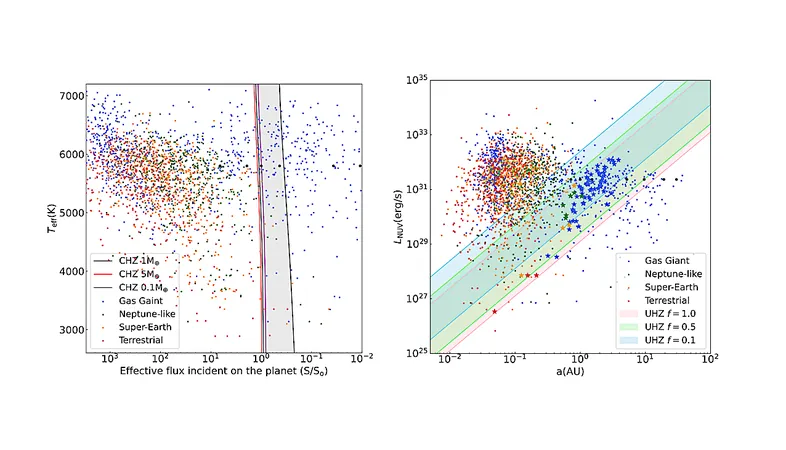
Unveiling Life Beyond Earth: UV Photometry and Habitable Zones of Over 2700 Exoplanets!
2024-11-01
Author: Li
Introduction
The race to discover habitable worlds beyond our solar system has never been more exciting! A new study reveals groundbreaking insights into the role of ultraviolet (UV) radiation in determining the habitability of exoplanets. With over 2,700 host stars analyzed, researchers are shedding light on which planets might support life.
Utilizing Data from Space Missions
Utilizing data from the GALEX (Galaxy Evolution Explorer) and Swift UVOT (Ultraviolet/Optical Telescope) missions, this comprehensive paper dives into the intricate UV photometry of stars harboring confirmed exoplanets. Through meticulous aperture photometry on single-exposure images, the researchers have produced photometric catalogs essential for addressing a multitude of scientific queries—ranging from stellar UV activity to insights on planet habitability.
Findings on Exoplanets
Remarkably, the study identified fewer than 100 exoplanets nestled within the circumstellar habitable zone (CHZ) and the UV habitable zone (UHZ). Most of these worlds are gas giants, suggesting that the search for potentially habitable terrestrial planets is still very much a work in progress.
Understanding Stellar Activity
One of the critical findings of this research is the effective representation of stellar activity through the FUV−NUV color index. This index outperforms other measures like the R′FUV and R′NUV indices in indicating stellar activity. The unique characteristics of our Sun, with its low far-UV emission and moderate near-UV emission, position it distinctively among solar-like stars, possibly making Earth an anomaly in the vast cosmos.
Conclusion and Future Exploration
As we push the boundaries of our understanding of the universe, studies like this highlight the profound complexities of stellar environments and the delicate balance required for life to exist. The quest for extraterrestrial life continues, and the insights from this research are set to propel future explorations into the unknown! Stay tuned—who knows what other incredible discoveries lie just beyond our reach?




 Brasil (PT)
Brasil (PT)
 Canada (EN)
Canada (EN)
 Chile (ES)
Chile (ES)
 Česko (CS)
Česko (CS)
 대한민국 (KO)
대한민국 (KO)
 España (ES)
España (ES)
 France (FR)
France (FR)
 Hong Kong (EN)
Hong Kong (EN)
 Italia (IT)
Italia (IT)
 日本 (JA)
日本 (JA)
 Magyarország (HU)
Magyarország (HU)
 Norge (NO)
Norge (NO)
 Polska (PL)
Polska (PL)
 Schweiz (DE)
Schweiz (DE)
 Singapore (EN)
Singapore (EN)
 Sverige (SV)
Sverige (SV)
 Suomi (FI)
Suomi (FI)
 Türkiye (TR)
Türkiye (TR)
 الإمارات العربية المتحدة (AR)
الإمارات العربية المتحدة (AR)